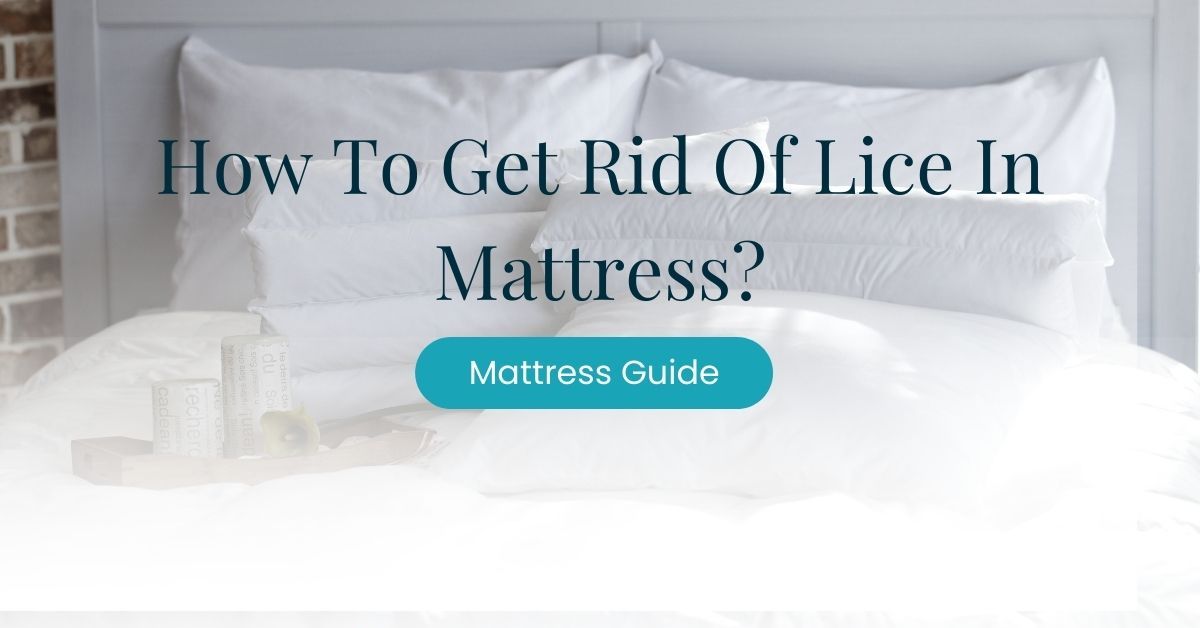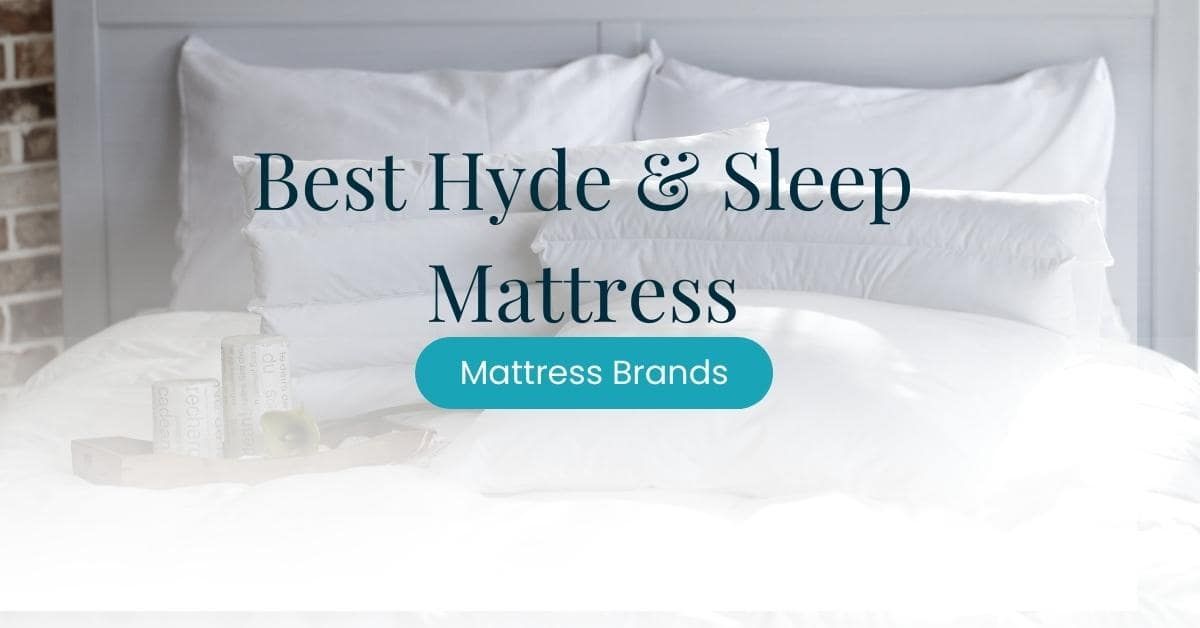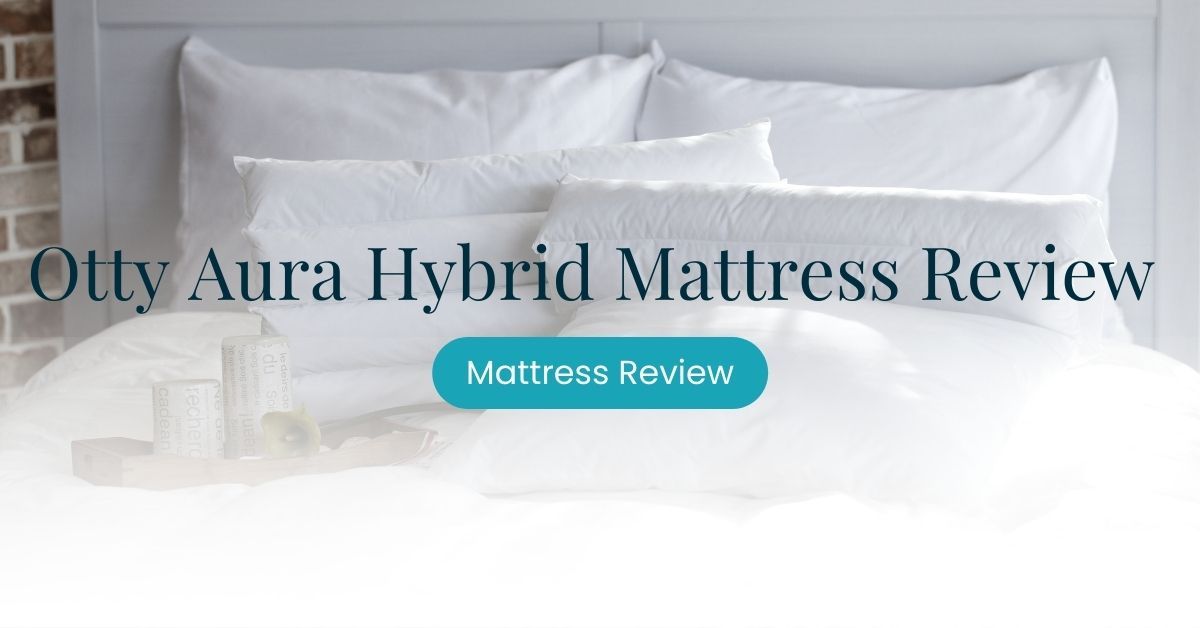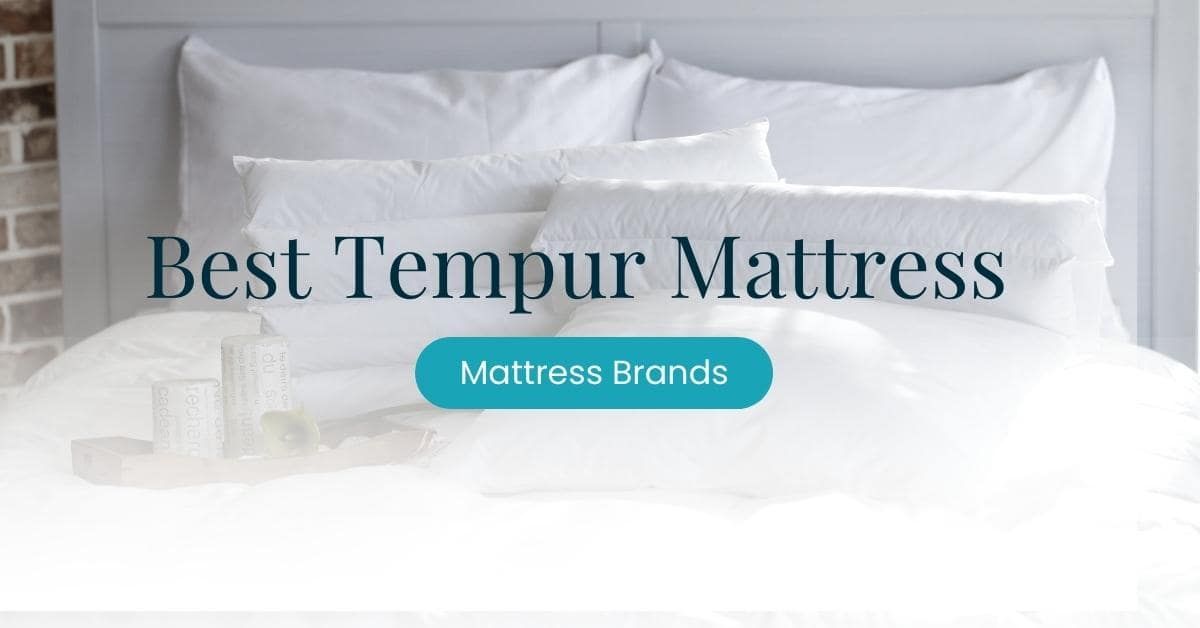Have you got the all-clear from head lice in your child’s or your hair? Maybe now you’re wondering how to eliminate lice on mattresses to ensure they don’t come back.
Lice are parasitic insects that live close to the human scalp and feed on human blood for survival.
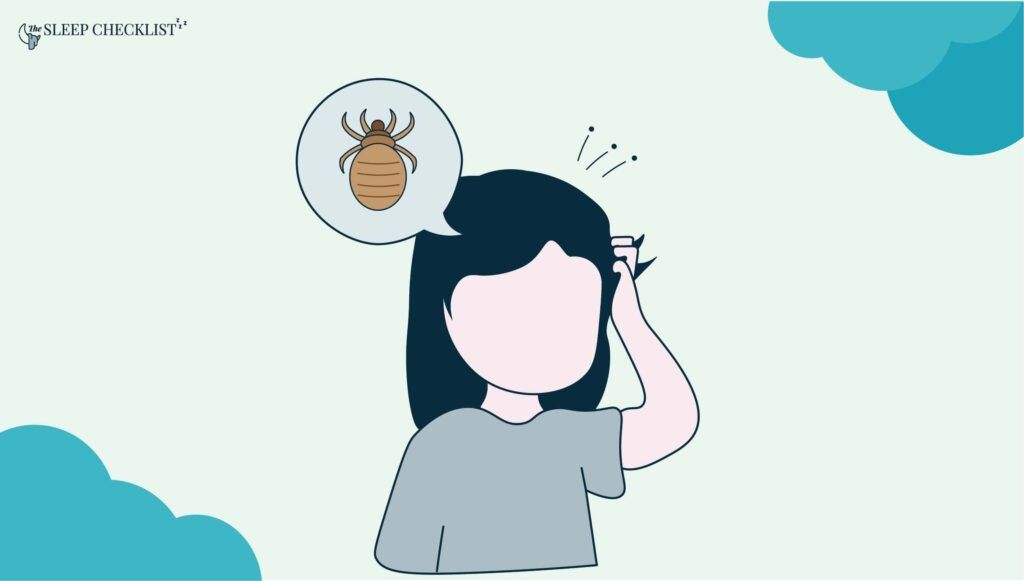
Even with the pandemic, a survey conducted with 2000 parents last June 2021 in the UK revealed that almost 70% used a head lice treatment in the past year.
Situations like this can cause emotional distress. The constant itch on the head, anxiety that you might infest the whole family. And, of course, you’ll want to ensure that you don’t get a lice infestation all over again.
Part of our extensive how to deep clean a mattress guide, this article will answer your questions. Let’s help you eliminate lice on your mattress so that no single louse doesn’t exist in your house!
How to Get Rid of Lice on Your Mattress?
Let’s start getting rid of lice on your mattress step by step. First, prepare the materials you’ll be needing:
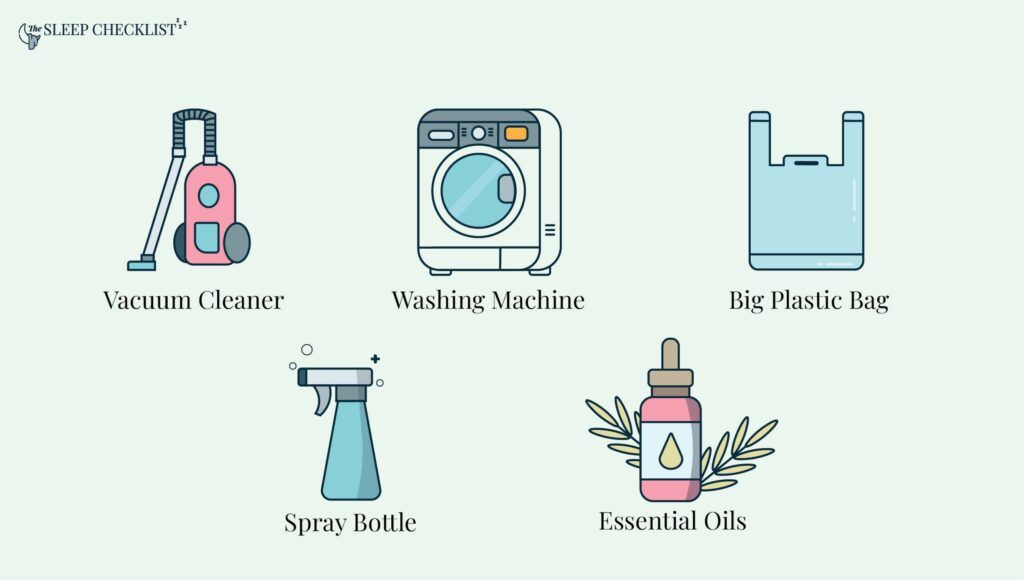
- Vacuum
- Washing machine with a hot cycle
- Big plastic bag
- Spray bottle (optional)
- Essential oils (optional)
Whether you’re cleaning a latex mattress or any other mattress type, knowing how lice can be killed is important. Lice can be killed in multiple ways:
1) Depriving lice of a food source
2) High temperature
3)Over-the-counter medications (for getting rid of lice on hair)
Wash your beddings with high temperature
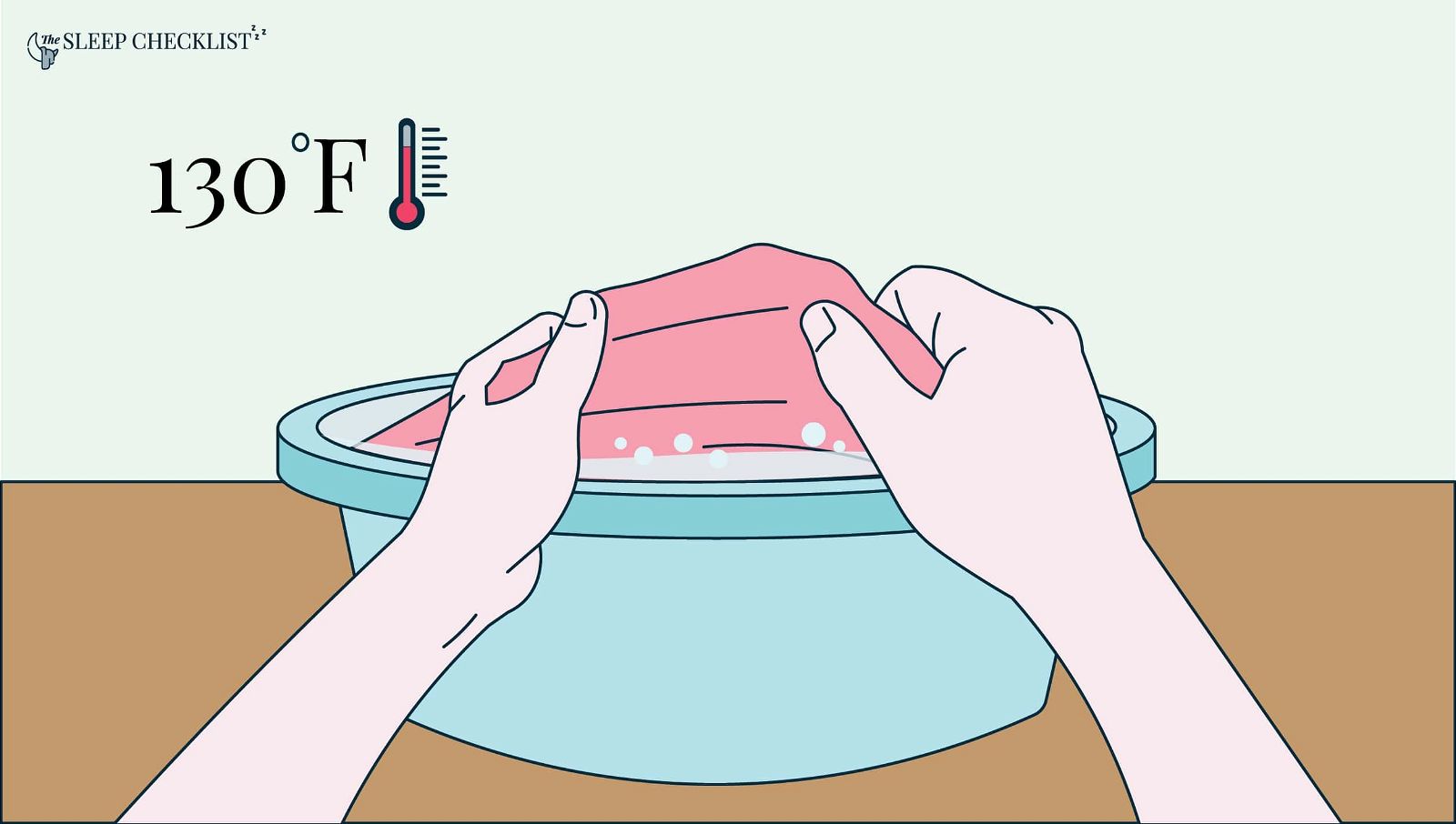
According to CDC, lice can be killed by subjecting them to a high temperature of at least 130°F for 5 to 10 minutes. Start by taking off your pillowcases, blankets, duvets, bedding and mattress covers.
Machine wash them using the hot cycle (130°F) for more than 10 minutes. If you can, try to use a high-heat drying cycle.
For items that cannot be machine washed, seal them in a big plastic bag for at least 10 days. Lice deprived of blood or food sources should die in 2 days.
But considering that some nits have fallen on these beddings, we’ll need 10 days to ensure that newly hatched nits also die.
Vacuum your pillows and mattress
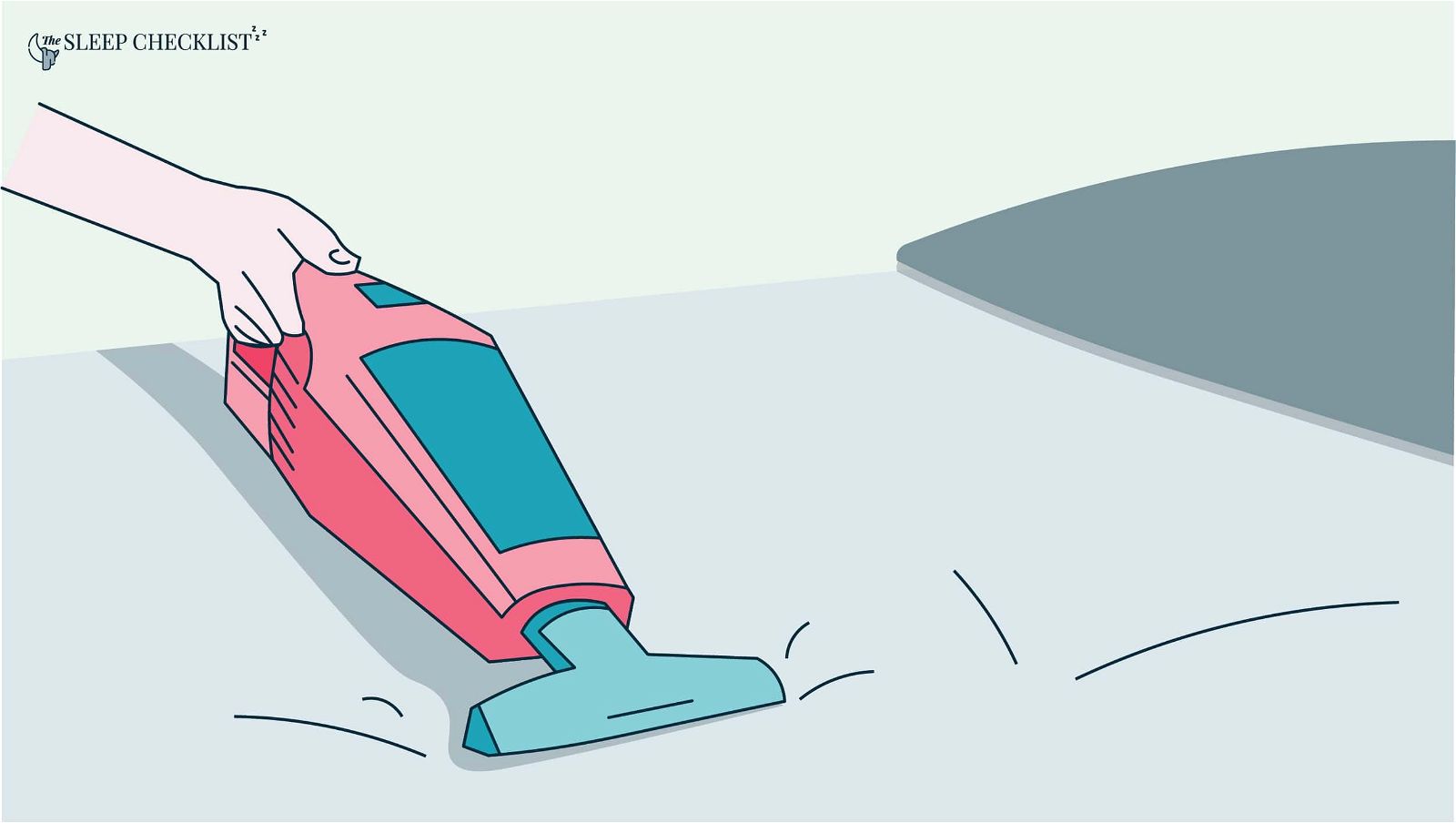
To get lice out of pillows and mattresses, vacuum them and make sure to cover the entire surface. Don’t forget the creases of the mattress as lice can fall on these spaces and hide.
Try some repellent spray.
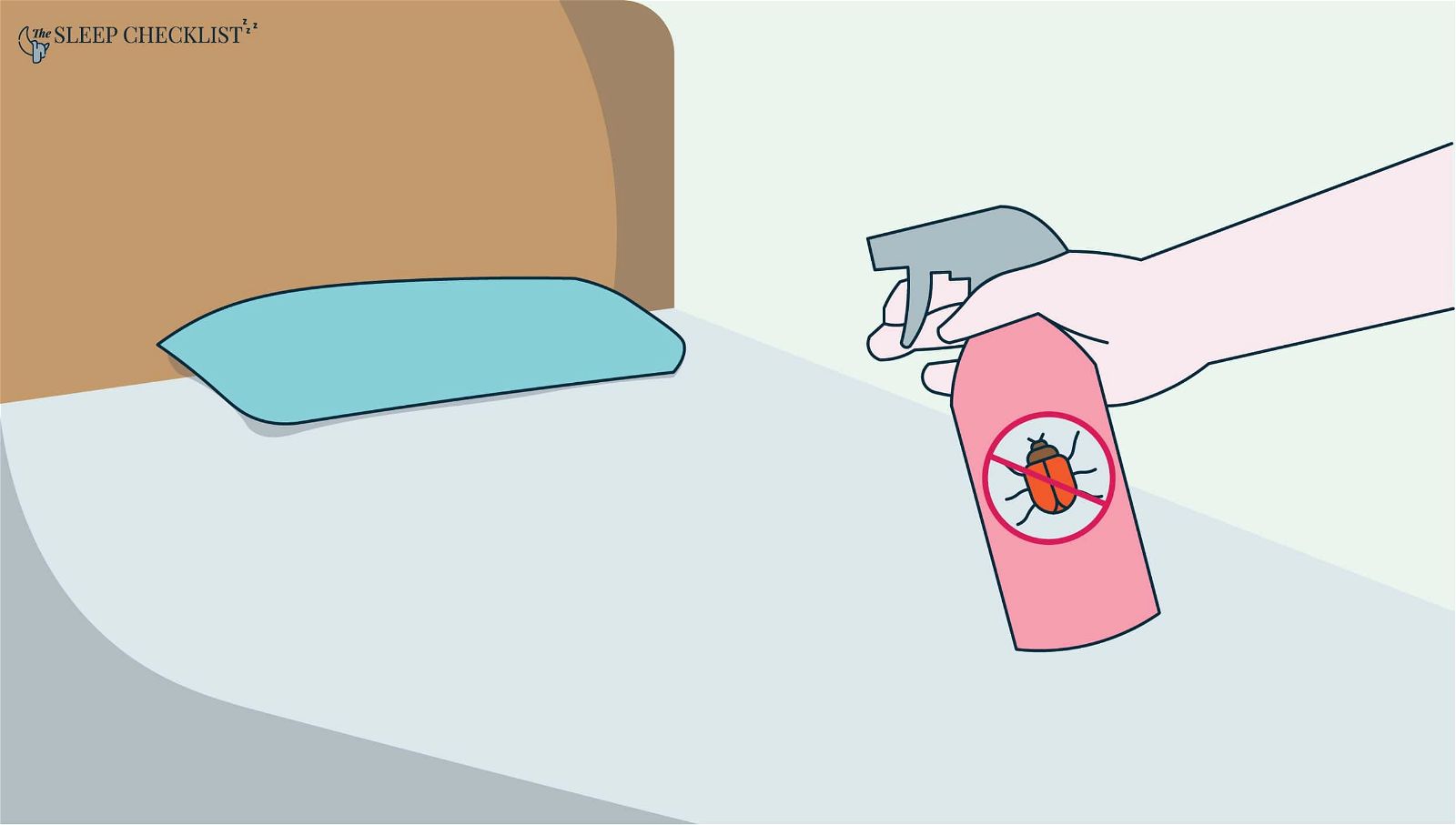
CDC discourages the use of fumigant sprays or fogs since they can be toxic when inhaled by humans. Although lice can be killed using the first two methods alone, sometimes we just want to add an extra step to make sure.
So, for this method, we will be using natural essential oils. While these won’t really kill lice, they will help repel lice.
In a study conducted, it was found that the tea tree showed promising results in getting rid of lice. Although some people might recommend other essentials oils also like:
lavender
eucalyptus
nutmeg
peppermint
red thyme
cinnamon leaf
aniseed
clove
neem
To make a DIY spray:
1. Combine 2 cups of water and 20 drops of your essential oil choice. Some people mix essential oils just to maximise possible effectiveness.
2. Use the empty spray bottle for the container.
3. Spray on your pillows, mattress, and other household items that may have some lice, like the couch and clothes.
How Long do Lice Live on Mattresses?
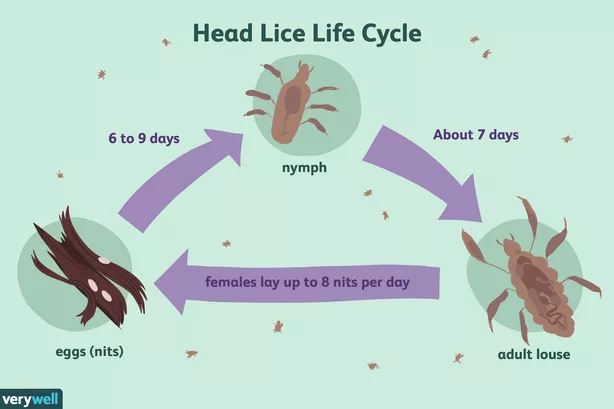
Before we can answer how long lice can live on mattresses, let’s take a look first at the lifecycle of lice.
Lifecycle of Lice
The lice lifecycle has three stages:
- egg/nits
- as a nymph
- in the adult stage.
Stage 1: Egg/Nits
Eggs or nits are oval-shaped and are often white to yellowish in colour. Being less than a millimetre in size, they are pretty hard to the naked eye and loads mistake nits or eggs as dandruff.
Adult females lay eggs that are usually attached near the hair shaft base. These take about 6 to 9 days to hatch.
Stage 2: Nymph
After hatching, nymphs are released. The shell that the nymphs spawned from stays attached to the hair. A nymph is pretty small and around pin head size, they also look like a junior version of an adult louse.
After 7 days, nymphs become an adult and are now ready to breed.
Stage 3: Adult
An adult louse has 6 legs, is about the size of a grain of rice and has a tan or grey colour. A female louse is more often than not larger in size than a male louse and lay up to an incredible 8 nits daily!
A louse in the ‘adult’ stage can stay alive for up to 30 days. It does depend on if they’re getting enough blood supply though.
An adult louse diet consists of blood to stay alive; without regular blood intake, the louse will die in 24-48 hours.
Only at this adult stage are lice considered infectious as they can lay eggs and breed.
Can lice live in/on a mattress?
Lice cannot live in a mattress alone as they need a blood host as a food source. The longest they can go without a food supply is 2 days.
This also applied to other everyday household items. So if you have questions such as:
- Can lice live in pillows?
- Can lice live on bedding?
- How long can lice live on clothes?
- How long can lice live on a hairbrush?
The answer is no, lice cannot live on household items and will only last up to 2 days without access to a blood host.
Will Lysol kill lice on mattresses?
No matter how much Lysol can be great at disinfection, it can’t kill a single louse. It is, however, better at removing dust mites from mattresses.
Yes, it can somehow immobilise them for a while. Still, the ingredients in Lysol are not enough to kill lice on mattresses or any other household surfaces.
How to get rid of lice with vinegar?
Vinegar is widely used as an ingredient in cleaning a memory foam mattress or even in cleaning a latex mattress. But is it effective in getting rid of lice?
Vinegar, specifically apple cider vinegar, can be a lice remedy. While it cannot kill a louse, apple cider vinegar can eliminate lice eggs in hair by aiding in the easier removal of nits. To do this,
- Combine equal parts of apple cider vinegar and water.
- Apply onto hair.
- Use a fine-tooth comb to remove lice and nits on your hair.
While this may not be effective for others, it is worth a shot.
How to disinfect furniture from lice?
You can do the same method we did for the mattress to remove and disinfect your furniture from lice. While you cannot wash your furniture as it can ruin it, you can naturally get rid of lice on furniture by sealing them with plastic and not using them for at least 10 days.
This will deprive lice of food sources, and they will naturally die.
Can you get lice from sleeping in the same bed?
Lice can only move by crawling; they cannot hop or fly. Therefore, lice can only be transmitted by direct contact with the hair of a lice-infested person.
If you’re sharing a bed with a lice-infested person, there is a high chance lice can crawl to your head while sleeping.
Considering that lice can crawl, here are also some other precautions you must take:
- Avoid sharing hats, scarves, and coats where lice can crawl back to another person’s head.
- Avoid sharing combs, brushes, or towels where lice are directly accessed if used by an infected person.
- Do not lie on beds, couches, or pillows recently used by someone with a lice infestation.
What happens if you have head lice for too long?
In Europe, the percentage of people affected with head lice increased to 22.4%. This is a large number but not all people affected know how to deal with this.
Addressing the source of the head lice and the possible infestations in your household is crucial to ensure that none of your family members will experience having lice again.
Suffering from head lice infestation has physical, mental, and social consequences.
1. Physical
Untreated head lice can damage the scalp and the overall health of the hair. If the hair follicles become clogged, hair loss can occur. Because of the constant itching, there is also a risk of damaging the scalp and introducing infection.
2. Mental
The constant tickling sensation of something moving in the hair can be distracting and annoying. This causes irritability and will affect the overall mood of a person. In addition, an infected person might also experience sleeplessness because of the itching.
3. Social
Aside from the health and emotional implications of having lice infestation, there will also be social consequences when people avoid someone with a lice infestation. They may be socially shunned, which can have lasting psychological results, especially among children.
Other schools have “no-nit policy” policies prohibiting infected children from going to school or joining other children.
How To Get Rid Of Lice On Mattress? – Summary
Lice infestation causes physical, mental, and social consequences if not addressed immediately.
While you may successfully get rid of lice on your hair, making sure that no louse is left in your house is the next step to ensure there won’t be further and future infestation.
Lice can be killed by depriving them of food sources and subjecting them to high temperatures of 130°F.
4 Sources
- https://www.which.co.uk/news/article/head-lice-and-nits-did-lockdown-reduce-cases-in-the-past-year-atwk76w7gLW2
- Di Campli, E., Di Bartolomeo, S., Delli Pizzi, P., Di Giulio, M., Grande, R., Nostro, A., & Cellini, L. (2012). Activity of tea tree oil and nerolidol alone or in combination against Pediculus capitis (head lice) and its eggs. Parasitology research, 111(5), 1985–1992.
https://www.ncbi.nlm.nih.gov/pmc/articles/PMC3480584/ - Falagas, M. E., Matthaiou, D. K., Rafailidis, P. I., Panos, G., & Pappas, G. (2008). Worldwide prevalence of head lice. Emerging infectious diseases, 14(9), 1493–1494.
https://www.ncbi.nlm.nih.gov/pmc/articles/PMC2603110/#R3 - Center for Disease Control and Prevention
https://www.cdc.gov/parasites/lice/head/prevent.html


